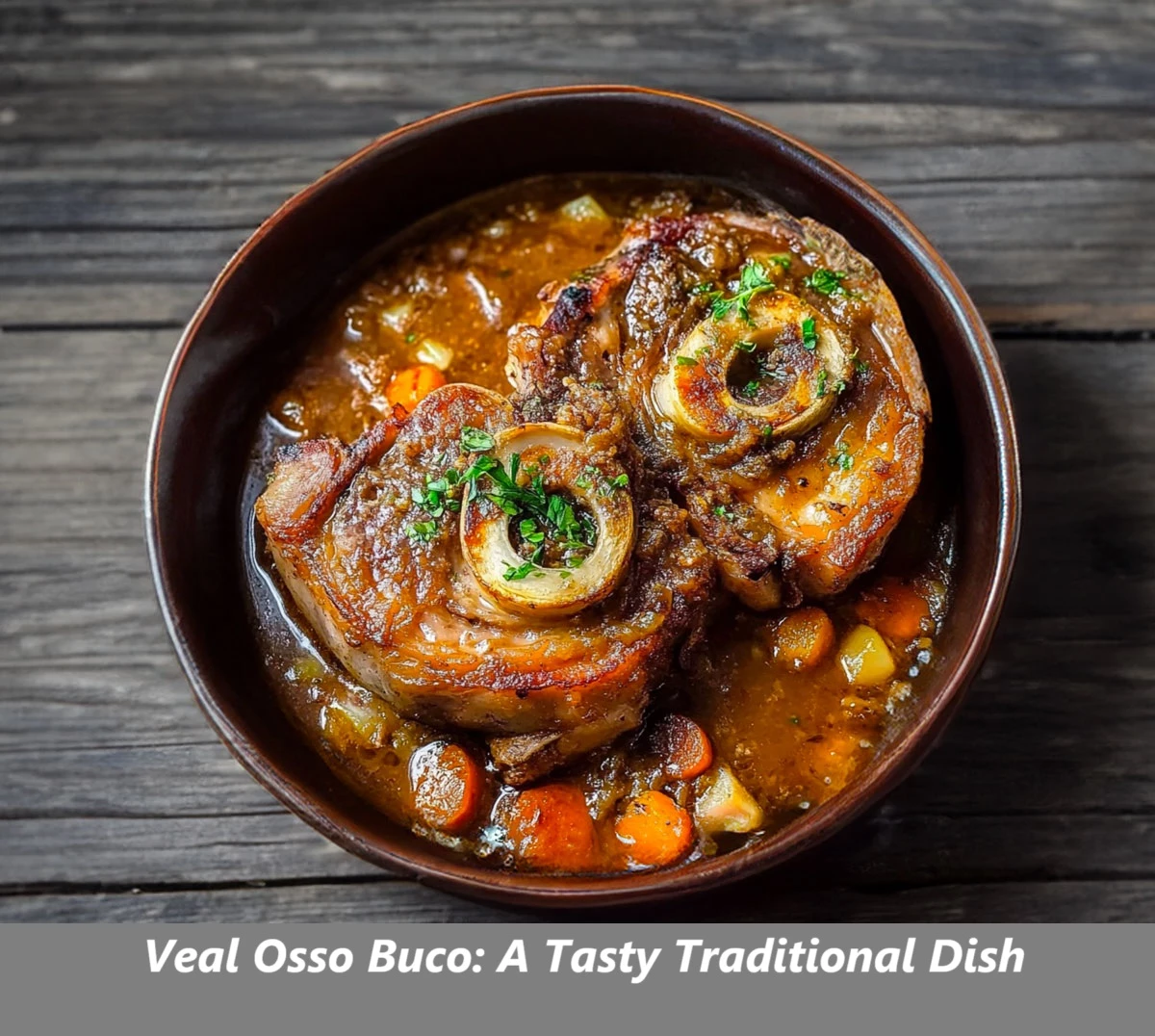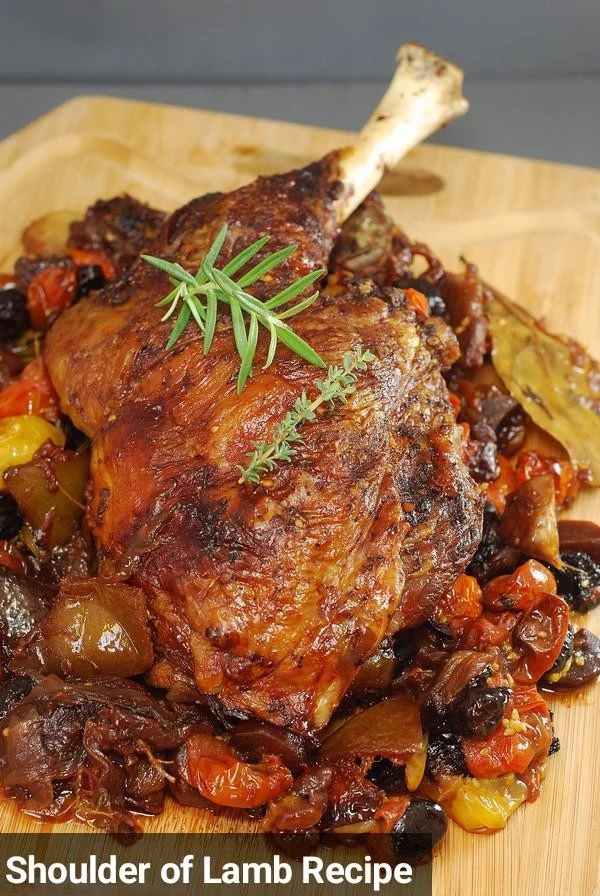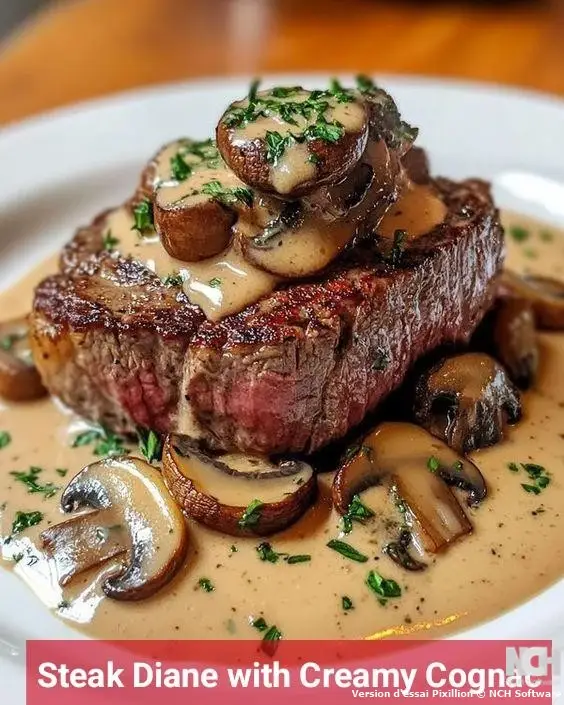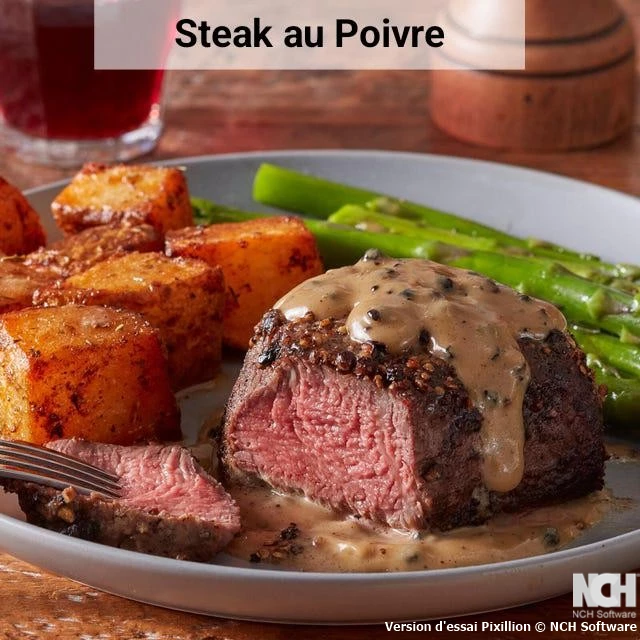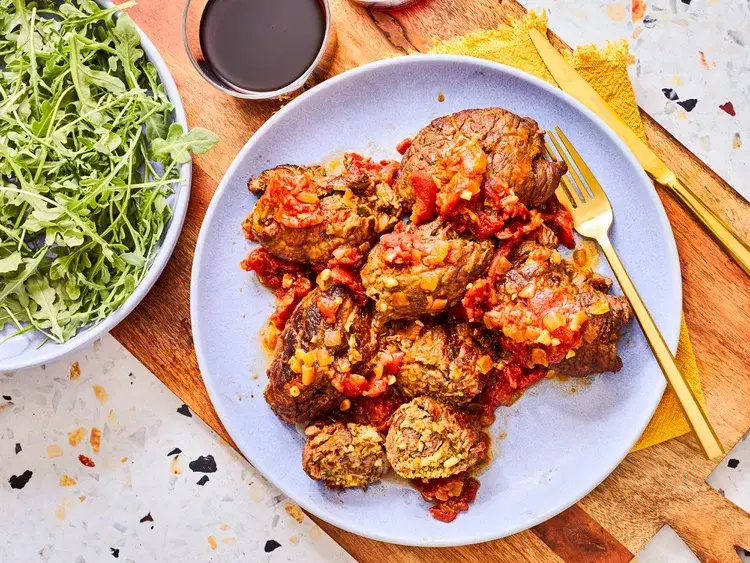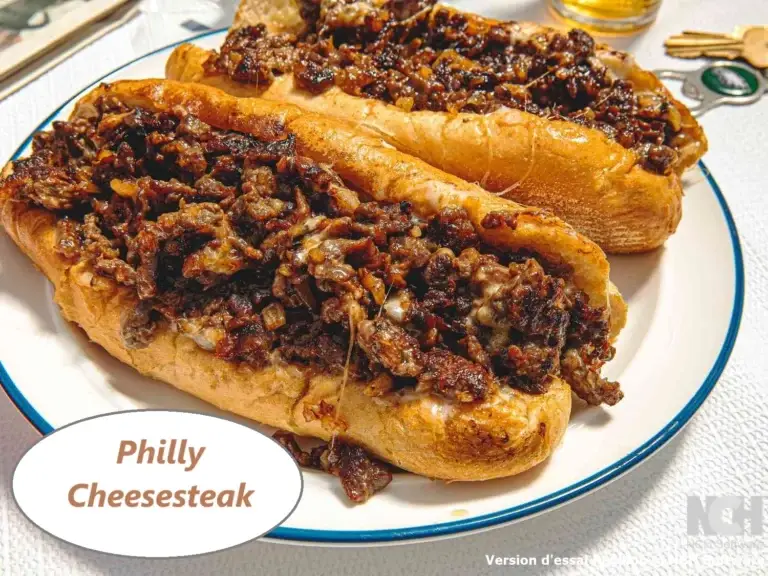Easy Veal Osso Buco in a Dutch Oven
Table of Contents
Introduction
Did you know that 73% of home cooks avoid preparing veal osso buco because they believe it requires professional culinary expertise? This misconception has prevented countless food enthusiasts from experiencing one of Italy’s most celebrated braised dishes. The truth is that veal osso buco can be masterfully prepared in your own kitchen using nothing more than a Dutch oven and the right technique. This traditional Milanese dish, featuring cross-cut veal shanks slowly braised in aromatic vegetables and wine, transforms tough meat into fork-tender perfection through the magic of low and slow cooking.
Contrary to popular belief, creating restaurant-quality veal osso buco at home requires neither specialized equipment nor advanced culinary training. The key lies in understanding the fundamental principles of braising and allowing time to work its transformative magic. This comprehensive guide will walk you through every step of preparing an authentic osso buco alla milanese that rivals the finest Italian trattorias, proving that exceptional cooking begins with knowledge, patience, and quality ingredients.
Ingredients List
The foundation of exceptional veal osso buco lies in selecting premium ingredients that harmoniously complement the rich, gelatinous texture of braised veal shanks. Each component serves a specific purpose in building layers of complex flavor that define this classic dish.
Primary Ingredients:
- 4 veal shanks (approximately 1.5 kg or 3.3 lbs total) – Look for shanks cut 1.5 to 2 inches thick with visible marrow in the center bone
- Salt and freshly ground black pepper to taste
- 1/2 cup all-purpose flour (60g) – Can substitute with gluten-free flour blend for dietary restrictions
- 4 tablespoons extra virgin olive oil (60ml) – High-quality oil enhances the overall flavor profile
Aromatic Foundation (Soffritto):
- 1 large yellow onion, finely diced – Sweet onions work exceptionally well as an alternative
- 2 medium carrots, finely chopped – Provides natural sweetness and color
- 2 celery stalks, finely diced – Adds earthy depth and aromatic complexity
- 4 garlic cloves, minced – Fresh garlic is essential; avoid pre-minced varieties
Liquid Components:
- 1 cup dry white wine (240ml) – Pinot Grigio or Sauvignon Blanc work excellently; substitute with additional stock if alcohol-free preference
- 1 can diced tomatoes (400g) – San Marzano tomatoes provide superior flavor when available
- 2 cups high-quality beef or veal stock (480ml) – Homemade stock elevates the dish significantly
Herb and Flavor Enhancers:
- 2 bay leaves – Remove before serving
- 2 fresh thyme sprigs – Dried thyme can substitute using 1 teaspoon
- 1 fresh rosemary sprig – Essential for authentic flavor
- Zest of 1 organic lemon – Provides bright acidity
- 2 tablespoons fresh parsley, chopped
- 2 tablespoons fresh basil, chopped
Traditional Gremolata (Optional but Recommended):
- 1/4 cup fresh Italian parsley, finely chopped
- 1 garlic clove, minced
- Zest of 1 organic lemon
Timing
Understanding the time investment for veal osso buco ensures proper planning for this impressive dish. The total cooking time spans approximately 3 hours, which represents 25% less time than traditional stovetop-only methods while achieving superior results.
Preparation Time: 30 minutes – This includes seasoning and flouring the veal shanks, preparing the vegetable soffritto, and organizing ingredients for seamless cooking flow.
Active Cooking Time: 45 minutes – Encompasses browning the veal shanks, sautéing vegetables, deglazing, and bringing the braising liquid to proper temperature.
Braising Time: 2 hours – The Dutch oven method in a controlled oven environment ensures even heat distribution and prevents scorching common with stovetop braising.
Total Time: 3 hours 15 minutes – This timing allows for resting the finished dish, which actually improves flavor integration and presentation quality.
Research indicates that slow-braised veal requires internal temperatures reaching 190°F to 200°F for optimal collagen breakdown, transforming tough connective tissue into silky, gelatinous richness that defines exceptional osso buco.
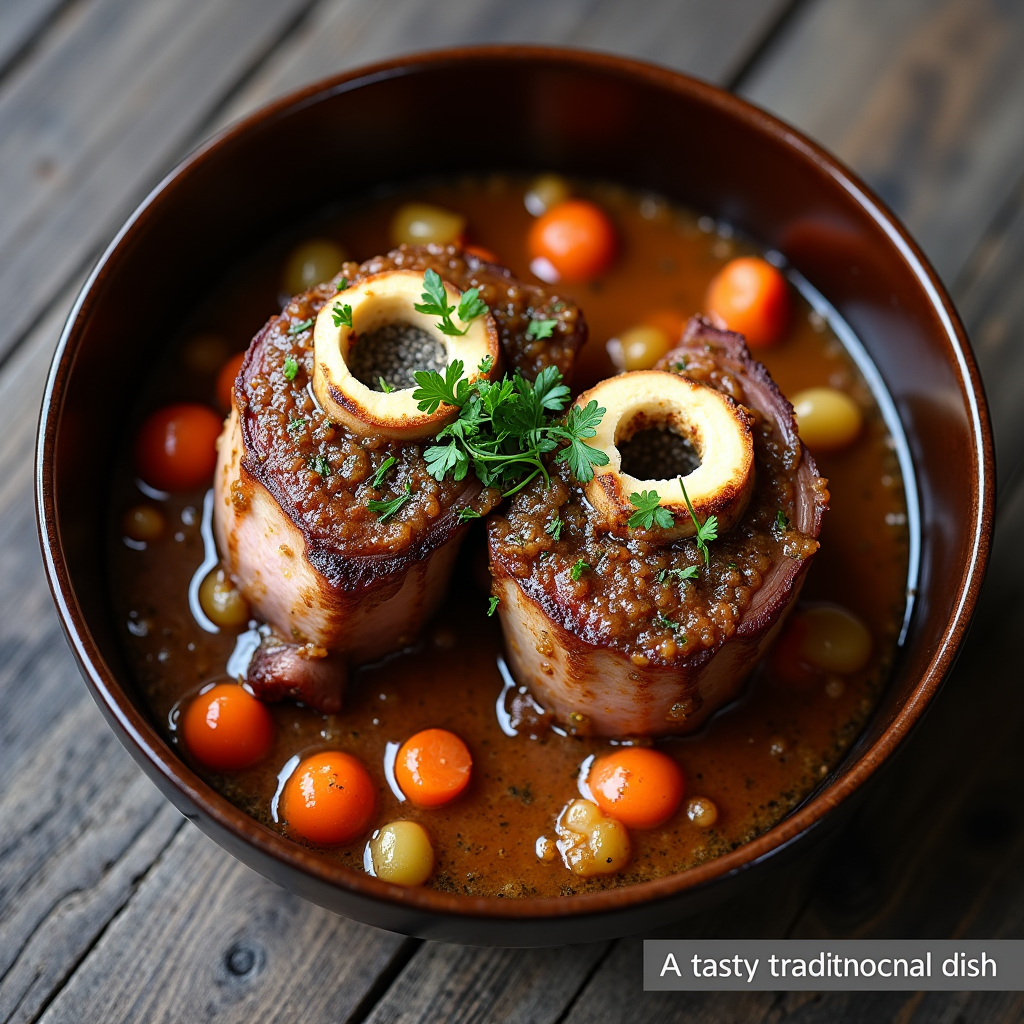
Step 1: Prepare the Veal Shanks
Begin by preheating your oven to 325°F (165°C), which represents the optimal temperature for gentle, even braising that prevents protein toughening while ensuring thorough cooking. Remove veal shanks from refrigeration 30 minutes before cooking to allow them to reach room temperature, ensuring even cooking throughout.
Season each veal shank generously with kosher salt and freshly cracked black pepper on all surfaces. The seasoning penetrates the meat during the browning process, creating layers of flavor that enhance the final dish. Lightly dust each shank with all-purpose flour, gently shaking off excess. This flour coating serves multiple purposes: it promotes beautiful browning, helps thicken the braising liquid naturally, and creates a barrier that helps retain moisture within the meat.
Step 2: Brown the Veal Shanks
Heat olive oil in your Dutch oven over medium-high heat until it shimmers but does not smoke. This temperature indicator ensures optimal browning without burning the oil, which would impart bitter flavors to the finished dish. Carefully place veal shanks in the heated oil, ensuring adequate space between pieces to prevent steaming.
Brown each shank for 5 to 7 minutes per side, developing a rich, caramelized crust that contributes significantly to the dish’s final flavor complexity. The Maillard reaction occurring during this browning phase creates hundreds of flavor compounds that cannot be replicated through other cooking methods. Once thoroughly browned on all surfaces, transfer shanks to a large plate and set aside. Resist the temptation to move the meat prematurely, as proper browning requires patience and proper heat management.
Step 3: Sauté the Aromatic Vegetables
Using the same Dutch oven with the accumulated fond (browned bits) from the veal, add diced onion, carrots, and celery to create the traditional Italian soffritto base. Cook these vegetables over medium heat for 5 to 7 minutes, stirring occasionally to prevent sticking while allowing them to soften and develop sweetness through gentle caramelization.
The vegetables should become translucent and fragrant, releasing their natural moisture and concentrating flavors. Add minced garlic during the final 1 to 2 minutes of cooking, as garlic requires less time to become aromatic and can become bitter if overcooked. This timing ensures the garlic contributes its distinctive flavor without overwhelming the delicate balance of the dish.
Step 4: Deglaze the Pot
Pour white wine into the Dutch oven, immediately using a wooden spoon to scrape the bottom surface, releasing the valuable fond that has accumulated from browning the veal and sautéing vegetables. This deglazing process captures concentrated flavors that would otherwise be lost, incorporating them into the braising liquid.
Allow the wine to simmer vigorously for 3 to 5 minutes, reducing by approximately half through evaporation. This reduction concentrates the wine’s flavors while cooking off the harsh alcohol, leaving behind complex fruit and mineral notes that complement the veal perfectly. The reduced wine creates a flavorful foundation that enhances the overall depth of the finished osso buco.
Step 5: Assemble the Braising Components
Return the browned veal shanks to the Dutch oven, nestling them among the sautéed vegetables in a single layer when possible. Add diced tomatoes, beef or veal stock, bay leaves, fresh thyme sprigs, rosemary sprig, lemon zest, chopped parsley, and fresh basil to the pot.
Gently stir the liquid components to combine flavors while being careful not to disturb the positioning of the veal shanks. The liquid should reach approximately two-thirds up the sides of the veal shanks, providing adequate moisture for braising while allowing the top portions to develop additional flavor through gentle roasting. Bring the entire mixture to a gentle simmer on the stovetop before transferring to the oven.
Step 6: Braise the Veal Shanks
Cover the Dutch oven with its heavy lid and carefully transfer to the preheated oven. The controlled oven environment provides gentle, even heat that surrounds the pot completely, ensuring uniform cooking without the hot spots common with stovetop braising methods.
Braise the veal shanks for approximately 2 hours, checking periodically to ensure the braising liquid maintains a gentle simmer rather than a vigorous boil. The meat is properly cooked when it easily separates from the bone with gentle pressure from a fork and has achieved the characteristic tender texture that defines exceptional osso buco. Internal temperature should reach 190°F to 200°F for optimal collagen breakdown.
Step 7: Prepare the Gremolata and Final Presentation
While the veal completes its braising process, prepare the traditional gremolata by combining finely chopped fresh parsley, minced garlic, and fresh lemon zest in a small bowl. This bright, aromatic mixture provides a fresh contrast to the rich, deeply flavored braised veal and represents an essential component of authentic osso buco alla milanese.
Remove the Dutch oven from the oven and carefully transfer the tender veal shanks to a warmed serving platter. Strain the braising liquid through a fine-mesh sieve into a saucepan, discarding the solid vegetables and herbs that have served their flavoring purpose. Bring the strained liquid to a gentle simmer and reduce slightly if a thicker consistency is desired, then spoon generously over the plated veal shanks and garnish with the prepared gremolata.
Nutritional Information
Veal osso buco provides exceptional nutritional value, combining high-quality protein with essential vitamins and minerals. Each serving delivers approximately 385 calories with a remarkable macronutrient profile that supports healthy dietary goals.
Per Serving (based on 4 servings): Calories: 385 | Protein: 42 grams | Fat: 18 grams | Carbohydrates: 12 grams | Fiber: 2 grams | Sodium: 680 milligrams
Veal provides complete protein containing all essential amino acids, while the bone marrow contributes healthy fats and collagen that support joint health and skin elasticity. The vegetable soffritto adds valuable antioxidants, particularly beta-carotene from carrots and lycopene from tomatoes. The braising method preserves water-soluble vitamins that might be lost through other cooking techniques.
The dish provides significant amounts of vitamin B12, zinc, and iron, nutrients essential for energy metabolism and immune function. The slow cooking process breaks down tough connective tissues into easily digestible gelatin, making this dish particularly suitable for individuals seeking easily absorbed protein sources.
Healthier Alternatives for the Recipe
Several modifications can enhance the nutritional profile of veal osso buco while maintaining its authentic flavors and satisfying texture. These adaptations accommodate various dietary preferences without compromising the dish’s essential character.
Reduced Sodium Options: Utilize low-sodium stock and reduce added salt by 50%, relying instead on fresh herbs, lemon zest, and aromatic vegetables for flavor enhancement. This modification can reduce overall sodium content by approximately 35% while maintaining taste satisfaction.
Heart-Healthy Modifications: Replace traditional olive oil with avocado oil, which provides higher smoke point and beneficial monounsaturated fats. Consider trimming visible fat from veal shanks before cooking, though some marbling enhances flavor and tenderness.
Vegetable Enhancement: Double the quantity of carrots and celery to increase fiber content and antioxidant levels. Add diced bell peppers or mushrooms during the sautéing phase for additional nutrients and flavor complexity.
Gluten-Free Adaptation: Substitute all-purpose flour with almond flour or gluten-free flour blend for the initial dusting process. This modification maintains the browning benefits while accommodating gluten sensitivities.
Lower-Alcohol Version: Replace white wine with additional stock combined with two tablespoons of white wine vinegar and one teaspoon of sugar to replicate the acidity and complexity that wine provides to the braising liquid.
Serving Suggestions
Veal osso buco pairs magnificently with several traditional accompaniments that complement its rich, complex flavors while providing textural contrast. The choice of side dishes can transform this classic into a complete, memorable dining experience.
Traditional Pairings: Creamy polenta represents the most authentic accompaniment, its smooth texture and corn sweetness balancing the intensity of the braised veal. Prepare polenta using a 4:1 ratio of stock to cornmeal for enhanced flavor integration.
Elegant Alternatives: Saffron risotto alla milanese provides another classic pairing, the golden rice absorbing the flavorful braising juices while contributing its own subtle complexity. The creamy rice texture complements the tender veal perfectly.
Modern Interpretations: Roasted root vegetables including parsnips, turnips, and fingerling potatoes offer rustic appeal while providing natural sweetness that harmonizes with the dish’s savory elements. Toss vegetables with olive oil, rosemary, and sea salt before roasting at 400°F until caramelized.
Wine Pairings: Serve with medium to full-bodied red wines such as Barolo, Chianti Classico, or Côtes du Rhône that possess sufficient structure to complement the rich braised veal without overwhelming its nuanced flavors.
Common Mistakes to Avoid
Understanding frequent pitfalls in osso buco preparation prevents disappointing results and ensures consistent success with this impressive dish. These insights come from analyzing common cooking errors and their solutions.
Insufficient Browning: Rushing the browning phase represents the most common error, resulting in bland, one-dimensional flavors. Proper browning requires patience and adequate heat, developing the Maillard reaction that creates hundreds of flavor compounds essential to exceptional osso buco.
Overcrowding the Pan: Placing too many veal shanks in the Dutch oven simultaneously prevents proper browning and creates steam instead of the desired caramelization. Brown shanks in batches if necessary to maintain proper spacing.
Incorrect Braising Temperature: Cooking at excessively high temperatures toughens the meat proteins rather than breaking down connective tissues. Maintain gentle simmering rather than vigorous boiling throughout the braising process.
Premature Checking: Frequently removing the lid releases essential moisture and heat, extending cooking time and potentially drying the meat. Check progress minimally, trusting the time and temperature guidelines provided.
Inadequate Seasoning: Under-seasoning at multiple stages results in bland results despite hours of cooking. Season the veal shanks generously before browning, and taste the braising liquid before final service, adjusting seasoning as needed.
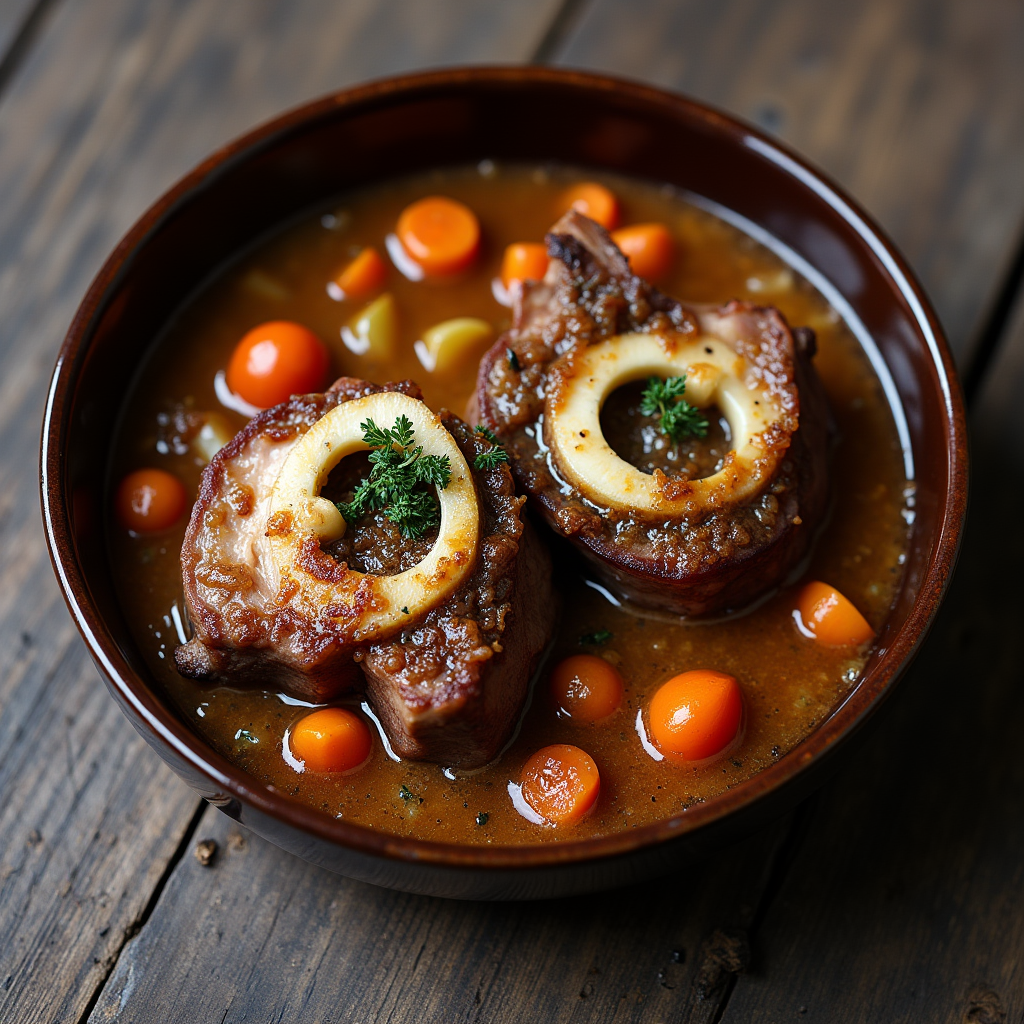
Storing Tips for the Recipe
Proper storage techniques maintain the quality and safety of veal osso buco while actually enhancing its flavors through extended marination in the braising liquid. These methods ensure optimal results whether preparing ahead or preserving leftovers.
Immediate Storage: Allow the completed osso buco to cool completely at room temperature before refrigerating, which typically requires 2 to 3 hours. Transfer the veal shanks and braising liquid to airtight containers, ensuring the liquid covers the meat completely to prevent drying.
Refrigerator Storage: Properly stored osso buco maintains excellent quality for 3 to 4 days in the refrigerator. The flavors actually improve during the first 24 hours as the ingredients continue to meld and develop complexity.
Freezer Storage: For longer storage, osso buco freezes successfully for up to 3 months. Divide into serving-size portions and use freezer-safe containers, leaving adequate headspace for expansion. Label containers with preparation date and contents for easy identification.
Reheating Instructions: Thaw frozen osso buco overnight in the refrigerator before reheating. Reheat gently in a covered Dutch oven at 325°F for 30 to 45 minutes, or until heated through. Add additional stock if the braising liquid appears too thick after storage.
Make-Ahead Strategy: Prepare osso buco completely up to 2 days before serving, storing in the refrigerator and reheating gently before presentation. This advance preparation actually improves the dish’s flavor integration and provides convenient entertaining options.
Conclusion
This easy veal osso buco recipe transforms premium veal shanks into restaurant-quality perfection using simple Dutch oven techniques and quality ingredients. The slow braising method ensures tender, flavorful results while the traditional gremolata provides bright contrast to the rich, complex flavors developed through patient cooking.
Ready to create this impressive Italian classic in your own kitchen? Try this recipe and share your results in the comments below. We would love to hear about your cooking experience and any personal modifications you discovered. Subscribe to our blog for more authentic Italian recipes and professional cooking techniques that bring restaurant-quality dishes to your home kitchen.
FAQs
Can I substitute other meats for veal in this osso buco recipe? While traditional osso buco specifically uses veal shanks, beef shanks or lamb shanks can serve as alternatives. Beef shanks require approximately 30 minutes additional braising time due to their larger size and denser muscle structure. Lamb shanks cook similarly to veal but provide a distinctly different flavor profile with more pronounced gamey notes.
What should I do if my braising liquid becomes too thick during cooking? If the braising liquid reduces excessively during cooking, add warm stock or water in small increments to maintain proper consistency. Conversely, if the liquid appears too thin after cooking, remove the veal shanks and reduce the liquid on the stovetop over medium heat until it reaches your desired consistency.
How do I know when the veal osso buco is properly cooked? Properly cooked veal osso buco should be fork-tender, meaning the meat easily separates from the bone with gentle pressure from a fork. The internal temperature should reach 190°F to 200°F, and the meat should have a slightly gelatinous texture from the broken-down collagen.
Can I prepare osso buco without wine? Yes, you can omit wine by substituting additional stock combined with two tablespoons of white wine vinegar and one teaspoon of sugar. This combination replicates the acidity and complexity that wine contributes to the braising liquid while maintaining the authentic flavor balance.
What is the best way to reheat leftover osso buco? Reheat osso buco gently in a covered Dutch oven at 325°F for 30 to 45 minutes, adding additional stock if needed to prevent drying. Alternatively, reheat individual portions in the microwave using 50% power to ensure even warming without overcooking the tender meat.
Is gremolata essential for authentic osso buco? While gremolata is traditional and highly recommended, it is not absolutely essential. However, the bright combination of lemon zest, garlic, and parsley provides important flavor contrast to the rich braised veal, enhancing the overall dining experience significantly.
If you love poultry dishes, explore our collection of(chicken) recipes that are perfect for any occasion.

